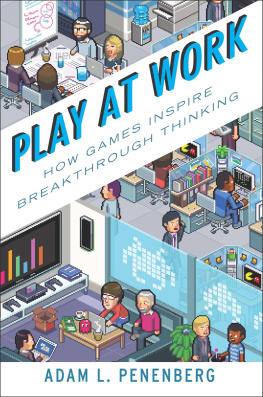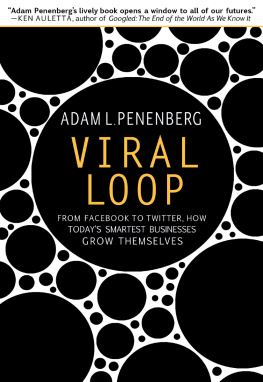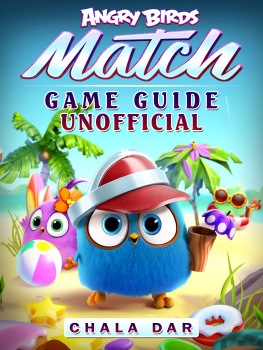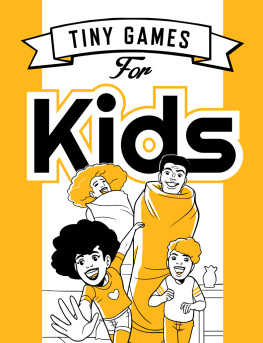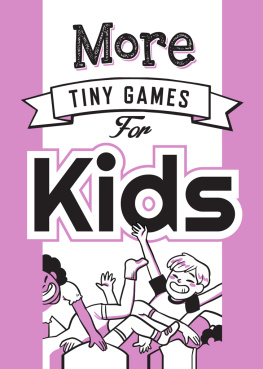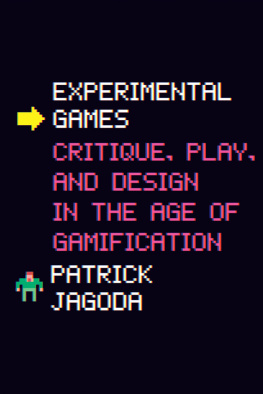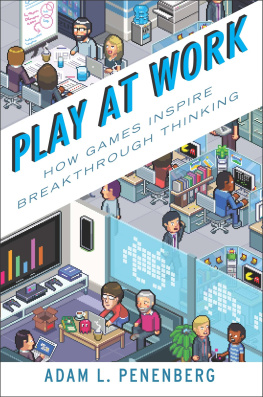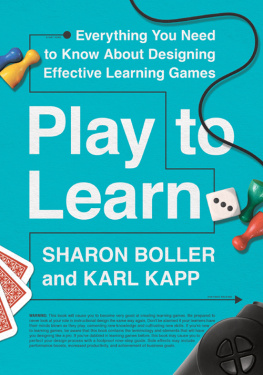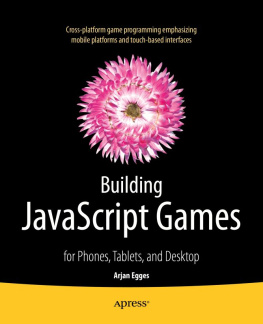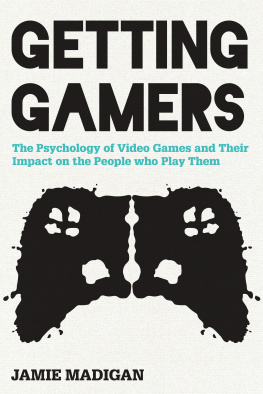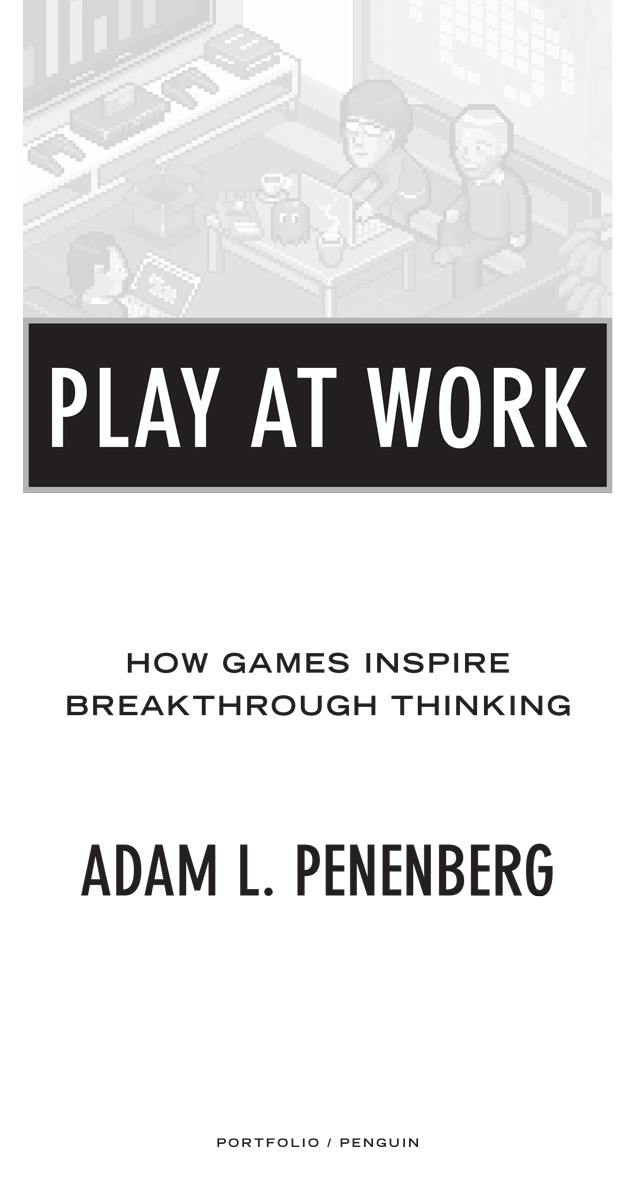Adam L. Penenberg - Play at Work: How Games Inspire Breakthrough Thinking
Here you can read online Adam L. Penenberg - Play at Work: How Games Inspire Breakthrough Thinking full text of the book (entire story) in english for free. Download pdf and epub, get meaning, cover and reviews about this ebook. year: 2013, publisher: Portfolio Hardcover, genre: Romance novel. Description of the work, (preface) as well as reviews are available. Best literature library LitArk.com created for fans of good reading and offers a wide selection of genres:
Romance novel
Science fiction
Adventure
Detective
Science
History
Home and family
Prose
Art
Politics
Computer
Non-fiction
Religion
Business
Children
Humor
Choose a favorite category and find really read worthwhile books. Enjoy immersion in the world of imagination, feel the emotions of the characters or learn something new for yourself, make an fascinating discovery.
- Book:Play at Work: How Games Inspire Breakthrough Thinking
- Author:
- Publisher:Portfolio Hardcover
- Genre:
- Year:2013
- Rating:3 / 5
- Favourites:Add to favourites
- Your mark:
Play at Work: How Games Inspire Breakthrough Thinking: summary, description and annotation
We offer to read an annotation, description, summary or preface (depends on what the author of the book "Play at Work: How Games Inspire Breakthrough Thinking" wrote himself). If you haven't found the necessary information about the book — write in the comments, we will try to find it.
If youve ever found yourself engrossed in Angry Birds, Call of Duty, or a plain old crossword puzzle when you should have been doing something more productive, you know how easily games hold our attention. Hardcore gamers have spent the equivalent of 5.93 million years playing World of Warcraft while the world collectively devotes about 5 million hours per day to Angry Birds. A colossal waste of time? Perhaps. But what if we could tap into all the energy, engagement, and brainpower that people are already expending and use it for more creative and valuable pursuits?
Harnessing the power of games sounds like a New-Age fantasy, or at least a fad thats only for hip start-ups run by millennials in Silicon Valley. But according to Adam L. Penenberg, the use of smart game design in the workplace and beyond is taking hold in every sector of the economy, and the companies that apply it are witnessing unprecedented results. Gamification isnt just for consumers chasing reward points anymore. Its transforming, well, just about everything.
Penenberg explores how, by understanding the way successful games are designed, we can apply them to become more efficient, come up with new ideas, and achieve even the most daunting goals. He shows how game mechanics are being applied to make employees happier and more motivated, improve worker safety, create better products, and improve customer service.
For example, Microsoft has transformed an essential but mind-numbing taskdebugging softwareinto a game by having employees compete and collaborate to find more glitches in less time. Meanwhile, Local Motors, an independent automaker based in Arizona, crowdsources designs from car enthusiasts all over the world by having them compete for money and recognition within the community. As a result, the company was able to bring a cutting-edge vehicle to market in less time and at far less cost than the Big Three automakers.
These are just two examples of companies that have tapped the characteristics that make games so addictive and satisfying. Penenberg also takes us inside organizations that have introduced play at work to train surgeons, aid in physical therapy, translate the Internet, solve vexing scientific riddles, and digitize books from the nineteenth century. Drawing on the latest brain science as well as his firsthand reporting from these cutting-edge companies, Penenberg offers a powerful solution for businesses and organizations of all stripes and sizes.
Adam L. Penenberg: author's other books
Who wrote Play at Work: How Games Inspire Breakthrough Thinking? Find out the surname, the name of the author of the book and a list of all author's works by series.

